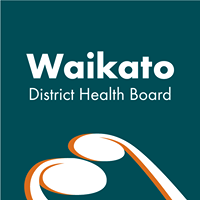Media information For immediate release
Date: July 9, 2008
Waikato Shallow Lakes Cyanobacterial Warning Update
Kainui Reinstated, Whangape Warning Lifted
The cyanobacterial health warning has been reinstated at Lake Kainui, following the latest monitoring results from the six Waikato shallow lakes.
Meanwhile, the warning has now been lifted from Whangape, but Waikare continues to have a health warning, although the cell count has fallen six-fold since the last monitoring tests in late April.
Testing is done two monthly during the colder months of the year.
"Waikato shallow lake users should always avoid contact with water which looks cloudy green or brown, or has scum forming even when there is no warning in place," said Waikato District Health Board medical officer of health Dell Hood.
"Most lakes are not tested, and the longer interval between winter time tests means that users must consider the possibility of cyanobacterial blooms in any water body before they use it - at any time of year."
Dr Hood reminds the public that test results should be used for general guidance only, as cyanobacteria and their toxins will not be evenly spread through any lake and may be concentrated in some areas by wind and water movements.
"During blooms, lakes should not be used for any activity which involves skin contact with the water," she said.
"If people choose to do this, they should shower and change their clothing as soon as possible afterwards, even if no symptoms are noticeable."
Swallowing water from lakes affected by blooms should also be avoided.
While not everyone will be affected, for some, the risks include rash, skin and eye irritation, allergy symptoms such as hayfever and asthma and possibly stomach upsets such as diarrhoea and vomiting.
These effects may not appear until some time after contact with the affected water.
The Waikato DHB Population Health Service would like to be informed about health problems which develop after exposure to any of the Waikato lakes.
Informal feedback suggests that water users may at times experience transient rashes and stomach upsets.
These incidents, while not serious for the individual could be early warnings of more significant problems. There could also be irritants other than cyanobacteria present in the water.
The PHS always likes to hear from anyone who has experienced this sort of problem, to allow recording of location, time, the activity taking place and length of time the problem lasted.
"Minor health problems do not require medical care, so we rely on the public to keep us up-to-date with this information," said Dr Hood.
Up-to-date information on cyanobacterial cell counts is available from local councils and Environment Waikato.
Visit http://www.ew.govt.nz/enviroinfo/water/healthyrivers/waikato/algalbloom/ for more information.
Health advice is available from the Public Health Unit (07) 839 8899 at all times.
ENDS
Contact:
Amy Thomsen Communications Consultant Waikato District Health Board Mobile: 021 712 663 Fax: 07 834 3673 www.waikatodhb.govt.nz
About Waikato District Health Board and Health Waikato: Waikato DHB is responsible for planning, funding and providing quality health and disability support services for the 353,460 people living in the Waikato DHB region. It has an annual turnover of $915 million and employs more than 5300 people.
Health Waikato is the DHB's main provider of hospital and health services with an annual budget of $530 million and 4500 staff. It has seven divisions across five hospital sites, two maternity and continuing care hospitals and 21 community bases offering a comprehensive range of primary, secondary and tertiary health services.
Other Waikato DHB-funded health services - including primary health, pharmacies and community laboratories - are delivered by a wide range of independent providers.
ENDS



 Whanganui Regional Museum: Historic Wedding Dress Unveiled, A Piece Of Marton’s Heritage
Whanganui Regional Museum: Historic Wedding Dress Unveiled, A Piece Of Marton’s Heritage Donovan Ryan: Local Runner Takes Out Frontrunner Christchurch Marathon
Donovan Ryan: Local Runner Takes Out Frontrunner Christchurch Marathon University of Auckland: Tributes Flow For Much Loved Pacific Leader Melegalenu’u Ah Sam
University of Auckland: Tributes Flow For Much Loved Pacific Leader Melegalenu’u Ah Sam NZEI: Ministry Of Education Cuts Will Disproportionately Affect Pasifika
NZEI: Ministry Of Education Cuts Will Disproportionately Affect Pasifika Day One Hapai te Haeata: Call To Action For Young Filmmakers Against The Backdrop Of Funding Cuts
Day One Hapai te Haeata: Call To Action For Young Filmmakers Against The Backdrop Of Funding Cuts Toyota New Zealand: Three Races For Top Three To Decide TR86 Title
Toyota New Zealand: Three Races For Top Three To Decide TR86 Title